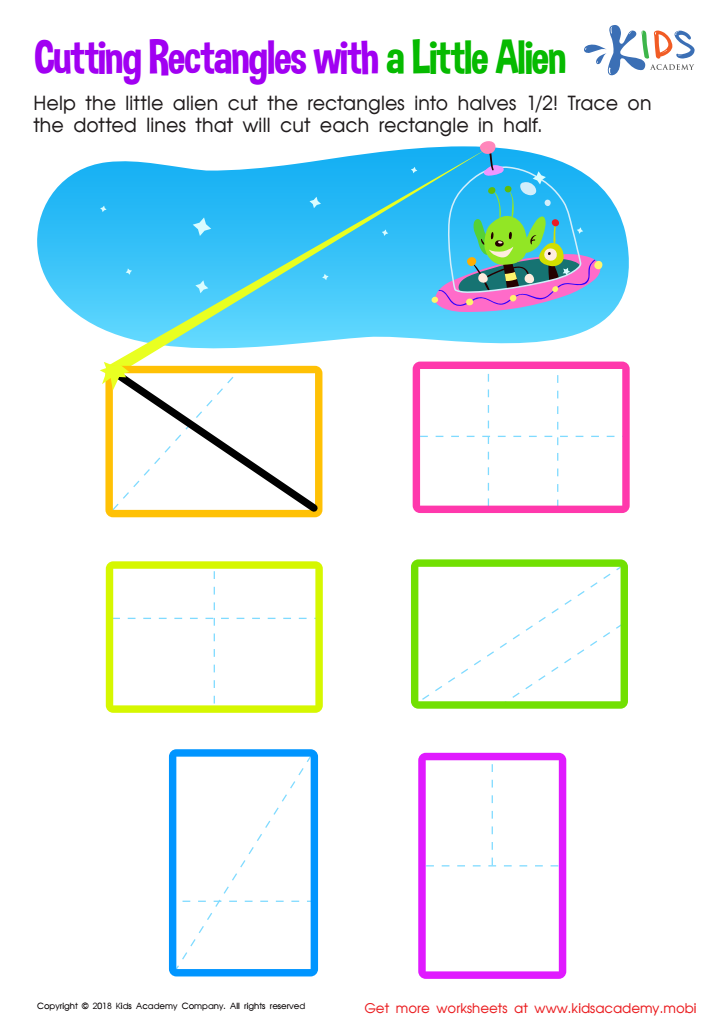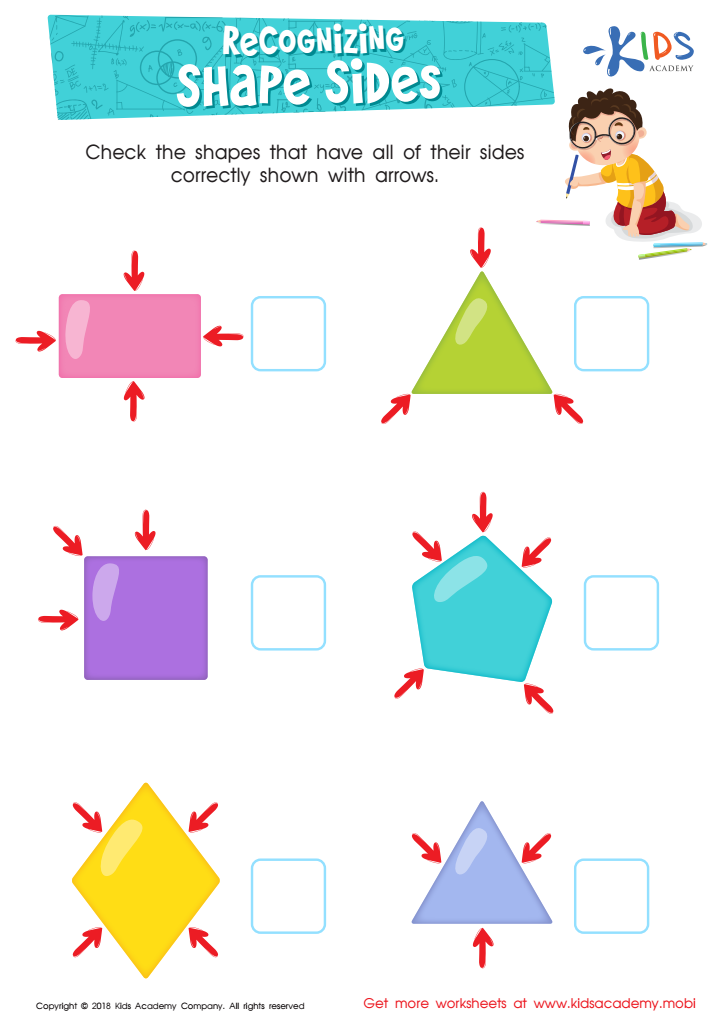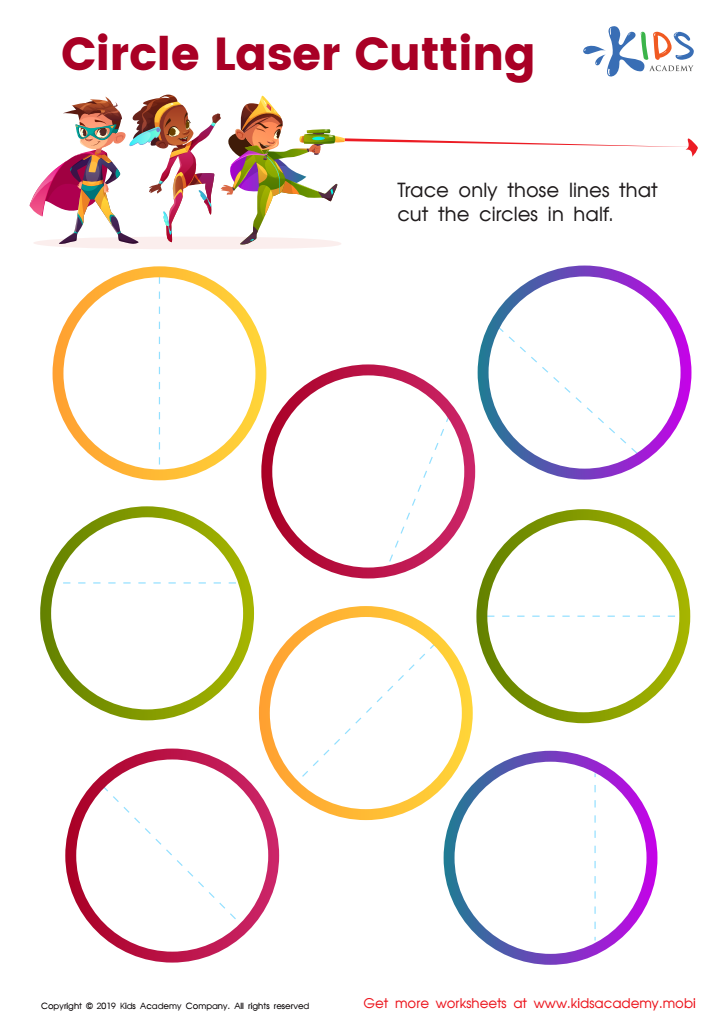Fine Motor Skills Normal Geometry Worksheets for Ages 7-8
5 filtered results
-
From - To
Enhance your child's learning experience with our Fine Motor Skills Normal Geometry Worksheets designed for ages 7-8! These engaging and interactive worksheets focus on essential geometry concepts while promoting the development of fine motor skills. Each activity encourages children to manipulate shapes, trace patterns, and draw geometric figures, fostering both their mathematical understanding and hand-eye coordination. Perfect for home or classroom use, these worksheets make learning fun and effective! Help your child build confidence in their geometric knowledge while refining their fine motor skills. Download now and watch your young learner thrive in creativity and critical thinking!


Cutting Rectangles with Alien Worksheet


Recognizing Shape Sides Worksheet


Three–Dimensional Shapes: Cylinder Worksheet


3D Shapes Quest Worksheet


Circle Laser Cutting Worksheet
Fine motor skills and understanding basic geometry are crucial for children aged 7-8, as they play a significant role in cognitive, physical, and social development. Fine motor skills involve the coordination of small muscles in the hands and fingers, allowing children to perform tasks like writing, drawing, cutting, and manipulating small objects. These skills are essential for academic success and foster independence in daily life activities.
Geometry, on the other hand, helps children understand shapes, spatial relationships, and orientation. At this age, children are ready to explore concepts like symmetry, measurement, and basic geometry principles through hands-on activities and visual aids. By integrating fine motor skills practice with geometric learning, educators can enhance a child's ability to visualize and manipulate shapes effectively.
Parents and teachers should emphasize these skills as they build a foundation for more advanced problem-solving, critical thinking, and creativity. Engaging in activities that promote both fine motor skills and geometry, such as molding with clay or building with blocks, not only reinforces learning but also makes it enjoyable. Ensuring children develop these skills now sets the stage for future academic achievements and boosts their confidence in tackling more complex concepts later in their education.
 Assign to My Students
Assign to My Students















